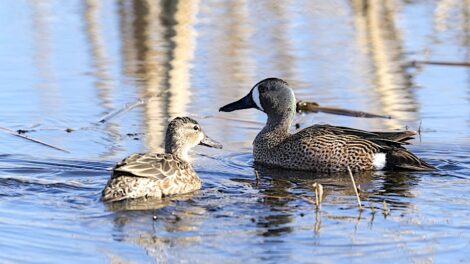NORTHDAKOTAOUTDOORS: Leave baby animals in wild
What to do (and not do)

Submitted Photo Whether it’s a fawn, baby bird, rabbit or duckling, the key to handling these situations is restraint. Photo from NDGF.
Springtime into early summer is when we start seeing baby birds, bunnies, fawn deer, ducklings and goslings making their way into the world. While it’s heartwarming to spot these tiny creatures, many people don’t know what to do when they come across one. Whether you’re walking through the woods, across the prairie or in your own back yard, it’s important to know what to do and even more what not to do.
1. Baby Birds:
Leave Them Where They Are
One of the most common wildlife encounters during spring is finding a baby bird on the ground. This can be alarming, especially if it appears to be abandoned or injured. However, before jumping into action, consider a few things.
Do: If you find a baby bird that is still featherless or covered with very few feathers (a nestling), gently place it back in its nest if you can find it. Most birds won’t abandon their young if they’ve been touched by humans.
Don’t: Don’t assume the bird is abandoned simply because it’s on the ground. Many young birds, known as fledglings, leave the nest before they can fly but still rely on their parents for feeding and protection. In fact, fledglings are often seen hopping around on the ground, learning how to navigate the world. Intervening by taking them home or keeping them from their parents can be harmful. Let the parents continue their work.
2. Baby Rabbits: Leave Them Alone
Baby rabbits are one of the most misunderstood animals. It’s natural to feel compelled to help a baby rabbit you come across, especially if it’s all alone in the grass.
Do: If you find a baby rabbit that appears to be unharmed, leave it alone. Mother rabbits typically only visit their nests once or twice a day to feed their young, so the babies may seem abandoned when they are, in fact, just waiting for mom to return.
Don’t: Don’t try to “rescue” the baby by picking it up and taking it home. The mother rabbit may avoid the nest if it smells human scent on the babies. Your best bet is to leave the rabbit in its natural environment and let nature take its course. In some cases, people mistakenly “rescue” baby rabbits that are just fine and might actually cause more harm by disturbing the nest.
3. Baby Ducklings: Keep the Family Together
Baby ducks, like other baby wildlife, are cute, but they also need their parents. Ducklings are often found near bodies of water, where they can quickly get into trouble if separated from their mothers.
If you come across baby ducklings and the mother is nearby, chances are she’ll guide them back to safety. Sometimes a mother duck can be found across the road from her ducklings and she will do her best to bring them safely back together.
Don’t: Never take ducklings home. While it may be tempting to raise them as pets, wild ducklings need to stay with their mothers to learn vital survival skills. It’s illegal to take wild animals from their natural habitat.
The Bottom Line: Let Nature Take Its Course
Whether it’s a fawn, baby bird, rabbit, or duckling, the key to handling these situations is restraint. If the animal appears healthy and capable of surviving on its own, the best thing you can do is leave it where it is. In most cases, nature has already provided the best care it can offer.
Animals are resilient, and often, the best way to help is by not getting involved. Keep in mind that your well-meaning actions could inadvertently disrupt a fragile ecosystem or prevent young from receiving the proper care from parents.
So, next time you come across a baby animal, remember in many cases, the best “rescue” is to step back and let nature do its job.
Doug Leier is a NDGF biologist and a Williston native. He began his career at Lostwood NWR and was a game warden in Bottineau.

